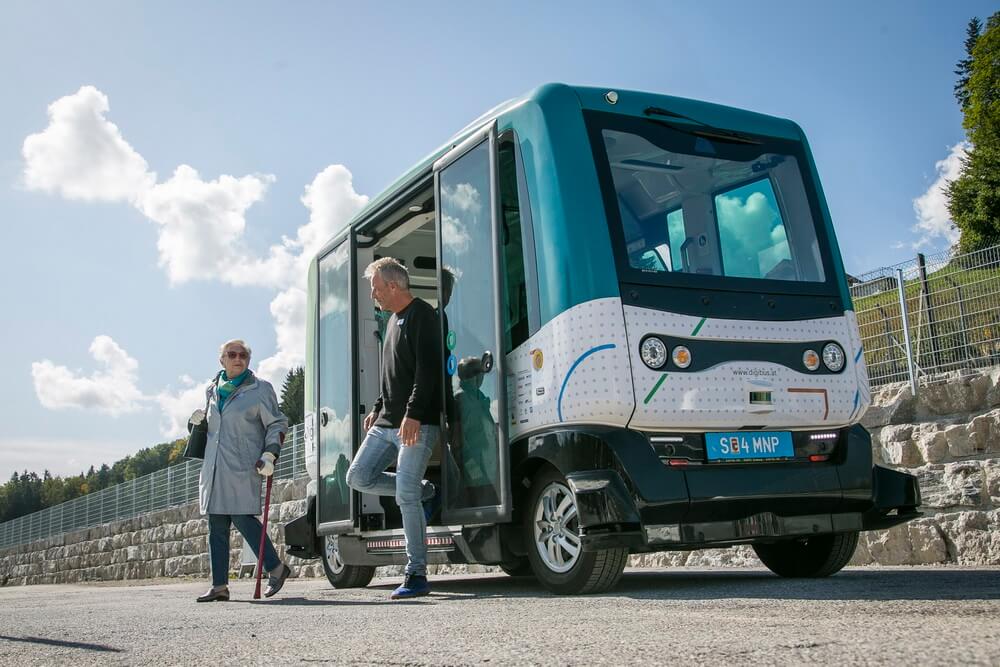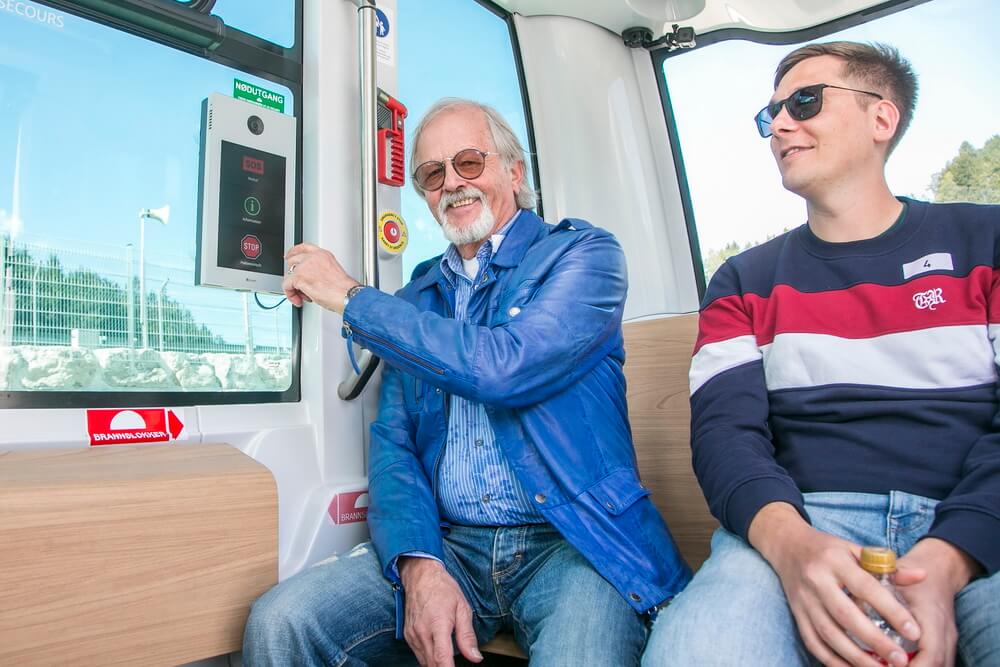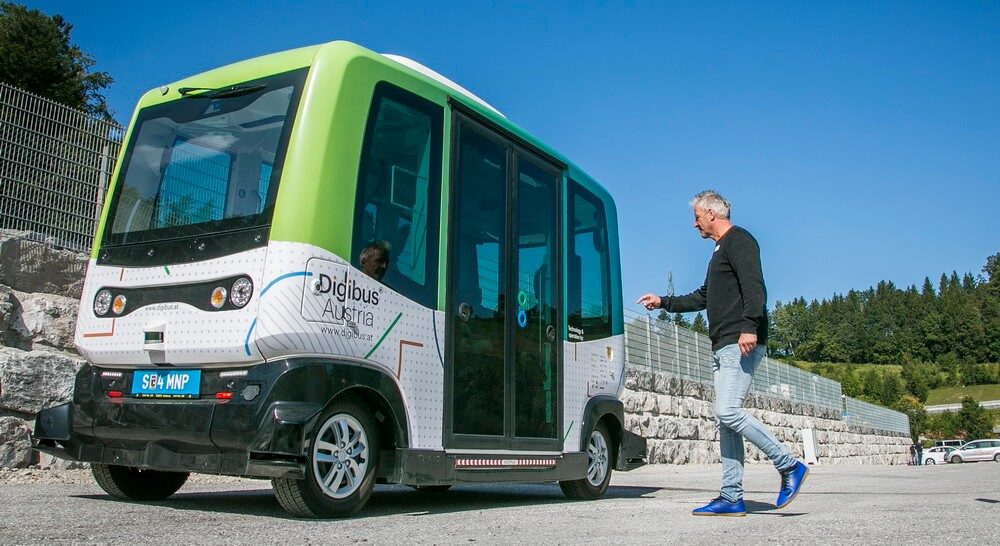
Autonomous shuttles can make a significant contribution to a region’s mobility system when well integrated into a multimodal transportation environment. “Autonomous vehicles, particularly shuttles and buses with minimal driver involvement or completely driverless shuttles, will only succeed in our mobility system if society accepts and uses these services,” says Claudia Luger-Bazinger, Innovation Researcher at Salzburg Research.
Salzburg Research examined the perceived safety of passengers in an autonomous shuttle (SAE Level 4) without an onboard operator. Sixteen passengers experienced rides in driverless shuttles monitored only by a supervisor in a control center, and they reported their sense of safety afterwards. The participants went through different test scenarios and were also confronted with unpleasant situations: in one scenario, they were alone in the self-driving shuttle, while in another, they were with another passenger who exhibited disruptive behavior. Additionally, the study investigated how the test subjects reacted when the maximum passenger capacity was exceeded, and a technical failure was simulated.
Perceived safety influences acceptance
The acceptance and willingness of people to use automated vehicles depend on several factors, including socio-demographic characteristics such as age, gender, income, and education level, as well as context-specific factors such as purchase prices, incentives, familiarity, travel times, and waiting times. However, one of the most critical aspects for acceptance is the perceived safety from the passengers’ perspective. “As autonomous shuttles represent a new form of transportation without human drivers, passengers need to have trust in driverless shuttles to feel safe,” says Luger-Bazinger.
Overall, the passengers in the study had a high sense of safety. They were surveyed after each test ride and reported feeling “safe” overall (27 percent of responses) or “very safe” (73 percent of responses). None of the passengers chose the option “less safe” or “not safe.”
Factors Influencing Perceived Safety
When asked about the factors influencing their sense of safety, the passengers provided 63 statements across all test rides, which were further analyzed. “The passengers’ responses could be categorized into four different categories, with the two most influential factors being the shuttle’s driving style and trust in the technology,” explains Luger-Bazinger.
Shuttle’s Driving Style
It was found that the shuttle’s driving style played a central role and was mentioned in 35 percent of all responses. For example, one passenger felt safe due to a “smooth ride without jerking.” Another passenger appreciated “the very smooth ride,” while another enjoyed the “gentle braking and very quiet operating sounds.”
Trust in the Technology
Equally important is trust in the technology. 33 percent of the respondents stated that their own trust in the technology influences their sense of safety. One passenger mentioned the following factors: “Trust in the technology, feeling of unfamiliarity due to novelty, fundamental trust must be present.” Another passenger mentioned having “trust in the new technology,” which leads to a solid sense of safety. Some passengers mentioned having “trust in the control center.”
Suggestions to Increase Perceived Safety
After each test ride, passengers were asked what would contribute to an increase in their sense of safety. A total of 45 statements were collected and evaluated.
Nearly 50 percent of all responses related to potential contact with a person in a control center, either actively or passively. For example, one passenger stated that perceived safety could be increased through “clear verbal communication without interruptions.” Two other passengers believed that “better quality of announcements” and “better and faster connection to the control center…” would contribute positively to the perceived safety.
Just under a quarter of the passengers’ statements (22 percent) indicated that sufficient information about the autonomous shuttle and the underlying system would contribute to their sense of safety (“more information about the system would reduce skepticism before boarding”). In addition, some features such as seat belts, emergency buttons, handrails, or other holding devices were mentioned.
Perceived Safety Increases with Experience
Overall, passengers felt safe during all test rides. While public opinion towards automated vehicles may be skeptical, with safety concerns representing the greatest skepticism for passengers and pedestrians, people’s opinions and attitudes change positively when they experience a ride in such a vehicle. Perceived safety increases with experience in a driverless shuttle. Furthermore, people would also be more willing to pay for a ride in a shuttle after experiencing it.
Further links
This might also interest you
6. March 2025
salz21: Necessary Steps for the Future
On March 5, 2025, salz21 | Home of Innovation once again provided a platform for future topics, innovations, and interdisciplinary exchange. More than 1,000 visitors took the opportunity to learn about current developments and discuss perspectives for tomorrow. Three topics were particularly dominant: climate protection, artificial intelligence, and a strong Europe.
6. September 2024
Franz-Benjamin Mocnik researches the communication of places.
In Salzburg, there is an exciting digitization research project: Franz-Benjamin Mocnik is studying the communication of places for the Faculty of DAS.
12. August 2024
SBS: One Software for Many Self-Service Devices
As a leading provider of banking software in Salzburg, SBS is now exploring new markets. The company remains true to its core segment by offering manufacturer-neutral software for self-service devices in additional sectors.
30. July 2024
Meissl: Updating Established Structures
There is a great deal of know-how, technology, and experience in umbrellas—especially those built by Meissl. With the support of funding, the company has also made significant progress in the digitalization process.

